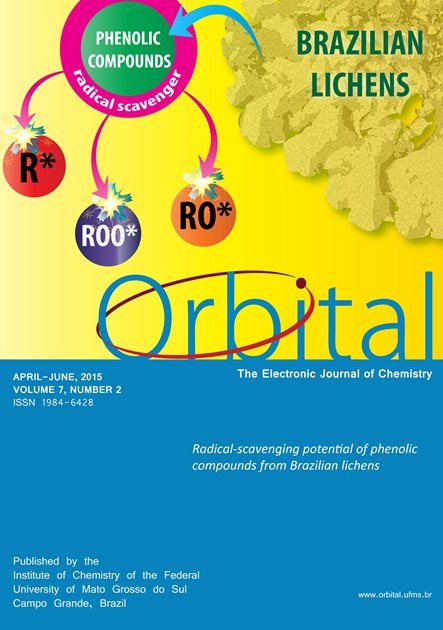Desenvolvimento de Métodos de Tratamento de Amostras para a Quantificação de Espécies Metálicas por Espectrometria Atômica em Tecidos de Jambu
- vegetable tissues,
- metallic species,
- sample treatments,
- nutrients
Copyright (c) 2015 Orbital: The Electronic Journal of Chemistry

This work is licensed under a Creative Commons Attribution-NonCommercial-NoDerivatives 4.0 International License.
Abstract
Jambu (Acmella oleracea), vegetable used in cooking and popular medicine in Northern Brazil, it has been revealed its prosperous and myriad of applications, in the more diverse areas. Nevertheles, few records about its inorganic composition and nutritional values are found. Given the complexity of the matrice, two methods of sample treatment were developed based on calcification and wet digestion for the quantification of K and Na by flame photometry and Ca, Cu, Fe, Mn, Ni and Zn by flame atomic absorption spectrometry in jambu tissues of those marketed in Boa Vista/RR, considering the instrumental optimization, the analytical and laboratorial efficiency through experiments of addition and recovery of analytes and comparisons with Brachiaria brizantha reference material (RM) and the essentiality and/or toxicity of the species in the relevant physiological tolerance limit. The methods were analytically efficient, with relative standard deviations below 10%, recoveries between 90 and 110% for all analyzed species and with no significant differences between their accuracy and concentrations, rating 95% confidence. These methods have advantages and disadvantages over one another, inherent to the applied treatments. There was a good laboratory performance, in face of the obtained results for the RM. The insertion of jambu in the human diet might contribute with higher levels of Mn and its leaves are sources of Ca, Cu and Fe. These methods are options for samples treatment of other vegetables tissues and for quantification of other metallic species and the results are new information about national food consumption.

